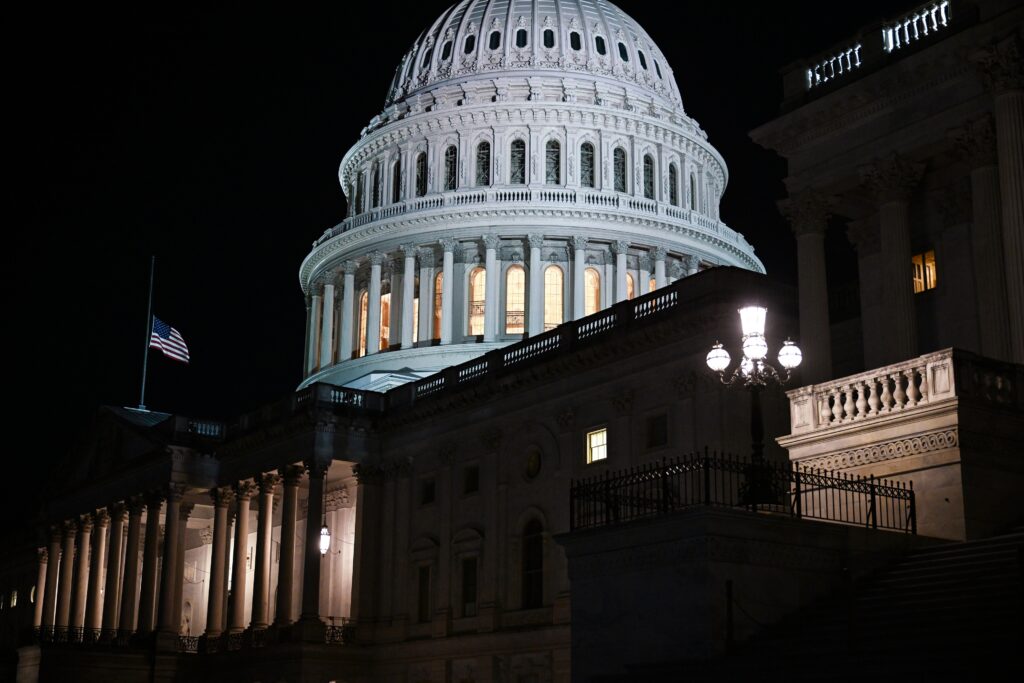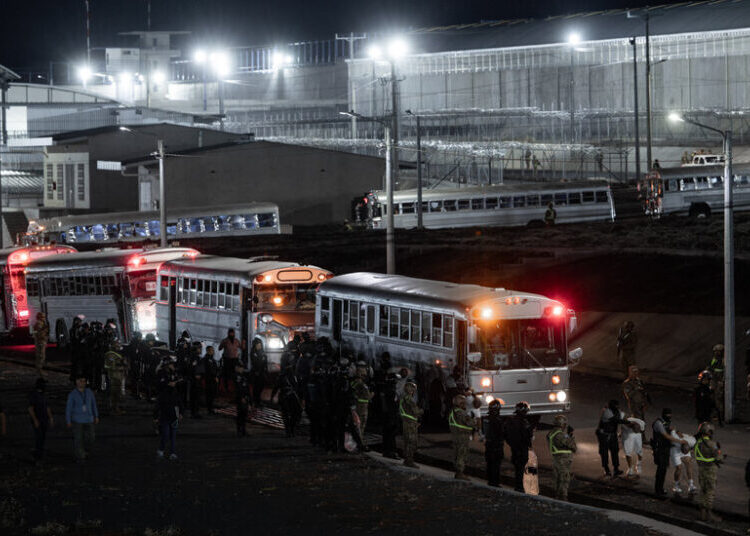The deal Congress passed to end the 43-day government shutdown boosted security funding for the Supreme Court, freeing up millions of dollars to support round-the-clock protection for the nine justices.
It provided no new security funding, however, for hundreds of judges in lower courts, who for months have urged lawmakers to set aside more money for their safety amid a surge in threats of violence.
Judiciary officials had asked lawmakers for an additional $142 million for security for lower federal courts, a 19 percent increase. The budget for security, which has been flat for two years, covers protective measures for the nation’s federal courts, served by more than 2,000 judges.
The lack of new funds for lower courts has intensified concerns among some judicial officials that security around those judges could deteriorate. They worry that budget constraints could limit how authorities respond to threats and delay critical security equipment upgrades such as new screening devices at courthouses.
According to several former judges, the money issue has also fueled perceptions that President Donald Trump’s administration and its allies in Congress have politicized judicial security. In hearings this year on the judiciary’s budget, some Republican lawmakers criticized judges who had ruled against Trump’s policies and pressed judiciary officials who testified on whether they would try to rein in what the lawmakers called a partisan judicial process.
“There are people in the judiciary who are afraid that judicial security for the lower courts and politics are getting played off each other, and no one wants to be in that position,” said Jeremy Fogel, a retired judge who served in the U.S. District Court for the Northern District of California.
“In the short term, I think that many in the judiciary will believe that their need for increased security because of threats against judges is being neglected,” Fogel said. “In the longer term, I think that problems with understaffing and aging infrastructure will increase the chances of a tragic incident.”
A White House spokeswoman, Abigail Jackson, said in a statement that the administration “cares deeply for the safety of all members of the Judicial Branch and will continue enacting the agenda President Trump was elected to fulfill.” She said the administration was dedicated to arriving at the truth in cases challenging its policies.
Spokespeople for congressional Republicans did not respond to requests for comment.
U.S. District Judge Esther Salas of New Jersey, one of the judiciary’s most outspoken advocates for greater judicial security, said she was thankful that the Supreme Court had received the additional funding to protect the justices against threats but disappointed that lower courts didn’t receive additional money.
“We need to make judicial security a priority for the lower courts that are holding the line when we talk about democracy,” said Salas, whose 20-year-old son, Daniel Anderl, was shot and killed by a gunman at the family’s home in 2020.
Legislation that reopened the government on Nov. 12 included $28 million for Supreme Court security, separate from the high court’s budget for salaries and expenses, which stood at roughly $130 million in 2025. Lawmakers also sent a $30 million supplement to the U.S. Marshals Service, which guards federal judges and courthouses, to carry out unspecified “protective operations.” The Marshals Service did not respond to questions about how the agency intended to spend the money.
Though the additional Marshals Service funding will probably free up some resources for protecting judges under threat, it represents a tiny fraction of the agency’s overall $1.7 billion operating budget, which has not significantly increased in recent years.
Threats against the judiciary have proliferated since at least 2020, coming from both sides of the political spectrum and creating new perils for judges, their families, court officials, and the law enforcement officers sworn to protect them.
A sharp spike in threats occurred in the early months of this year, Marshals Service data shows, as Trump and senior officials repeatedly assailed judges who they said had blocked his agenda.
The Marshals Service investigated threats against 396 judges in fiscal year 2025, which ended Sept. 30. That’s more than any other year for which data is readily available except for 2023, when the Marshals Service investigated threats against 455 judges, according to agency statistics.
During the past seven weeks, at least 64 judges have received threats that prompted investigations by the Marshals Service, according to agency data. FBI Director Kash Patel testified in September that the bureau was running 17 investigations into threats against federal judges.
Judges and their relatives have received death threats that the marshals have deemed credible. Some judges who have ruled against the administration have received unsolicited pizza deliveries in the name of Salas’s son — a sign meant to intimidate them by showing that their addresses are known, they say.
The Marshals Service has assigned protective details to judges and their families at levels not seen in decades. The agency began providing permanent protection to the Supreme Court justices after marshals in 2022 arrested a man with a gun outside the home of Justice Brett M. Kavanaugh. The man later said he wanted to kill the justice because of the court’s repeal of abortion rights. In some instances, judges say they have hired private security companies to protect them.
Gabe Roth, executive director of the nonprofit judicial watchdog Fix The Court, said long-term underfunding of security could drive qualified judges away from the federal bench.
“You think life tenure sounds great, but if it means having to move due to threats or having to pay out of pocket for extra security, as has happened of late, then maybe that type of public service isn’t worth it,” he said.
Top judges from the Judicial Conference of the United States, the federal court system’s policymaking body, testified in Congress twice in recent months asking for more security funding. They told lawmakers they had already postponed updates for aging security cameras, screening devices, and other equipment at courthouses to avoid dipping into money meant for court security officers. They also urged congressional appropriators to increase Marshals Service funding to hire more deputies.
“These are really serious matters, and Congress is not taking it seriously,” said Liam O’Grady, a retired judge who served in the U.S. District Court for the Eastern District of Virginia.
“They have been almost begging them to increase the budget for security and the top priority of getting more money to the Marshals Service,” O’Grady said. “The Marshals Service is doing the best they can, but they’re severely understaffed and are not able to address many of the origins of these threats.”
“I fear,” he added, “that more of our judges or their family members will be seriously injured or killed.”
Even as threats have escalated, Trump and senior officials have persistently vilified judges who have ruled against the administration, accusing them of “judicial tyranny” and calling for some to be impeached.
Days before Congress passed the legislation to reopen the government, Deputy Attorney General Todd Blanche suggested the administration was at “war” with “rogue activist judges” and called on young lawyers to join the fight.
Some Republican lawmakers have echoed the administration’s language, including in hearings during the summer on the judiciary’s budget, disquieting judges and judiciary advocates who have called on officials to tone down the rhetoric.
“I’m sure some of it was political theater, just like I think a lot of impeachment talk is political theater,” said Fogel, who along with O’Grady is a member of the nonpartisan judicial advocacy group known as Keep Our Republic’s Article III Coalition. “But it doesn’t change the fact that judges are feeling concerned about their security, and they present evidence of need for more security, and then there’s no action.”
The post As judges face more threats, only the Supreme Court got new security funds appeared first on Washington Post.




